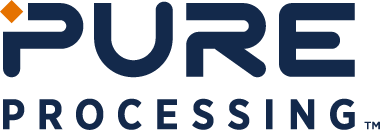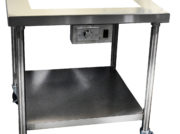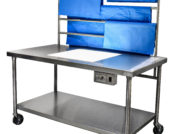
Hidden Potential: Lost Time and Productivity Inefficiencies in Fragmented Assembly Processes
Have you ever sat down at the end of the day, tired, but feeling like you didn’t accomplish a lot? Wondering what it was that made you exhausted by the end of it? You may look back on your day and recall a handful of accomplishments; a few things knocked off the to do list. However, upon further evaluation you recall the ten plus trips up and down the stairs you took putting items away, or the repeat trips to the car to unload the groceries. This all took up time, that while necessary to complete the job, stole time away from your ability to complete additional tasks or achieve a couple extra goals.
This same concept applies to our workdays and how we manage our tasks and the physical steps required to complete them. Workflow mapping and time-motion studies are formal methods to measure and evaluate how much movement is required to efficiently complete a task. These studies have not only helped efficiency but also budget planning and providing metrics for staff performance evaluations (Kalne et al, 2022).
There are several factors sterile processing departments can evaluate to determine their reprocessing efficiencies.
Supply Location
Are supplies easily and readily available to the team as they go about their work? Are their work areas stocked with the most often used items so that they are not repeatedly leaving their station or pausing a reprocessing step to gather their supplies? This could include brushes, flushing devices and inspections tools in decontamination. At prep and pack areas, it could be demagnetizers, indicators, container locks and instrument testing material.
Each step of the process requires some consumable or tool. It is important to keep supplies centralized and quickly accessible to decrease foot traffic and allow for more time to be dedicated to quality and compliance.

Manual and Automated Processes
Automation is quickly finding its way into sterile processing, beyond the integration of washer disinfectors and conveyor systems. There are flushing systems, and instrument recognition software. We now have the capabilities of artificial intelligence (AI) and software interfacing at our fingertips to improve not only efficiency, but also standardization and consistency. When considering automated processes, consider how it will improve and support your department. Poorly integrated automation can also have a negative consequence of decreasing productivity and compliance. Careful implementation of AI is key to prevent unwanted outcomes.
Too Much Purview
Staffing shortages, unexpected absences and increased work volumes continue to be commonplace in our healthcare facilities. Bandwidth is limited and team members are doing double and sometimes triple duty. This can directly relate to reduce productivity as they juggle being in multiple places and assignments throughout the day, sometimes in the same moment.
Do you have a technician who may be assigned to prep & pack, but it also responsible to unloading the washers and covering sterilizers while a peer is at lunch? Appropriately and strategically filling voids in the operational plan can make immediate improvements to your process times and productivity levels.
Resources
Resources and references are an important component of consistency and compliance. How we store, communicate and maintain availability of resources can impact the amount of time a sterile processing technician is away from their work area.
Are resources kept on a shelf or in the cabinet in the department? Are there opportunities to upload procedures, instructions for use (IFU) and reminders to your tracking system, or even create posters and visual cues they can reference without having to walk across the department or leave their work area?
Routines
Inventory, referencing resources and even stepping away from our stations to perform specific job functions comes with being a GI or sterile processing tech.
Instilling thoughtful and consolidated routines into our technicians’ and nurses’ daily processes eases the labor their bodies must contend with and can help reduce unnecessary repetition throughout their day.
There can be a large return on investment (ROI) in conducting and implementing changes identified through a time-motion study. Kalen, et al found that time-motion studies can “regulate expenses, enhance working conditions, inspire staff, and boost productivity by developing a “standard” job technique.” (2022) Knowing and understanding the impact of the department’s layout, the operational strategies, and the routines the teams develops informs us on the overall production of the department, and enhances our abilities to troubleshoot, prioritize and improve how we complete our daily tasks.
References
Kalne, P. S., & Mehendale, A. M. (2022). The Purpose of Time-Motion Studies (TMSs) in Healthcare: A Literature Review. Cureus, 14(10), e29869. https://doi.org/10.7759/cureus.29869
https://www.ncbi.nlm.nih.gov/pmc/articles/PMC9629289/






